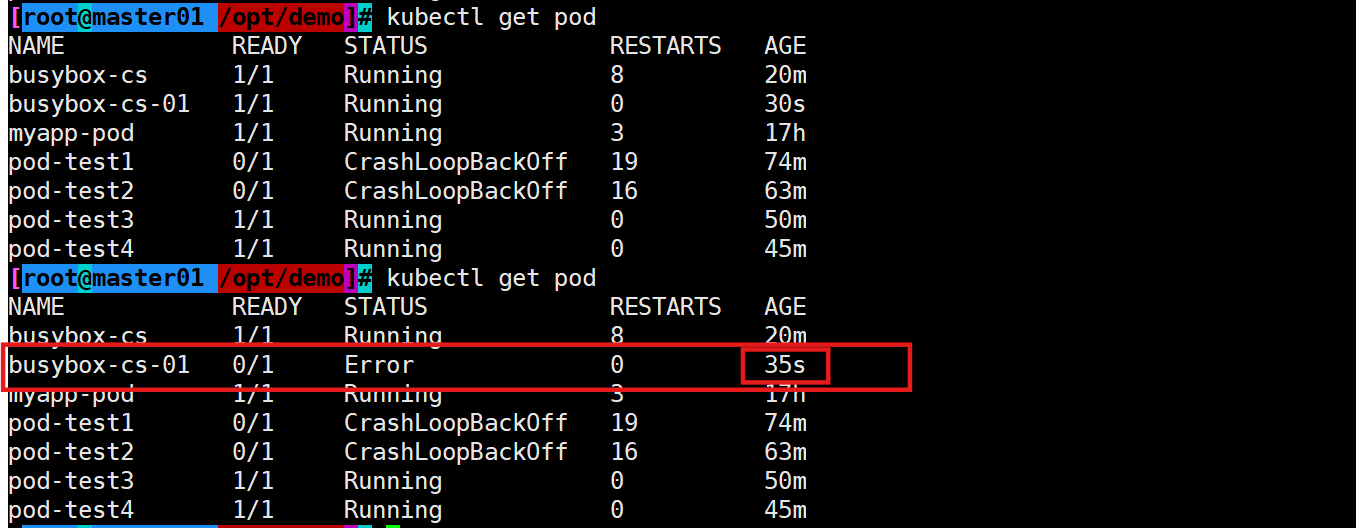前言
最近在跑代码的时候需要可视化一些网络中间层特征来诊断网络,但是我的backbone是一个3D网络,一般的Grad-CAM都是在2D网络中应用更广泛,查了一下也只有几篇博文是关于3D Grad-CAM的介绍的。自己参照他们的代码试了一下,但是可视化的结果很怪异。

可以看到这个图的热区分布很奇怪,热区并不平滑,而且出现的位置都很诡异,比如大量的热区出现在边界区。不知道是自己使用的方法不对还是代码本身就有点问题…只能说求人不如求己,自己重新尝试用hook自己写一个Grad-CAM的代码。
PyTorch的Hook机制
PyTorch中有三种hook机制,分别是register_hook、register_forward_hook和register_backward_hook,下面具体介绍一下每个机制的用法。
register_hook
这是一个最底层的hook机制,是一个Tensor级别的hook函数,可以在计算某个tensor的梯度时进行自定义操作。当这个tensor的梯度在反向传播过程中被计算时,注册的回调函数会被调用,回调函数接受的参数为tensor的梯度。
tensor = torch.tensor()
hook = tensor.register_hook(callback_func)
其中的callback_func为自定义的回调函数。
这个函数可以用于监视/分析特定tensor的梯度信息。
register_forward_hook
这是一个module级别的hook函数,在某个模块的前向传播完成后注册一个回调函数,在前向传播后被调用,接收三个参数:模块、输入、输出。
def forward_hook(module, input, output):pass
module = A_Module()
hook = tensor.register_forward_hook(forward_hook)
这个函数可以帮我们抓取模型学习到的特征表示,比如卷积网络的中间层输出等。
register_backward_hook
同样这个是module级别的hook函数,但是是在模块的反向传播过程中被调用。
def backward_hook(module, input, output):pass
module = A_Module()
hook = tensor.register_backward_hook(backward_hook)
这个函数可以帮我们检查梯度的大小和分布,识别并检测潜在的梯度问题,如梯度爆炸/消失。
具体应用举例
register_forward_hook
这是一个module级别的hook函数,主要用于模型的前向传播过程中加入自定义操作。模块的前向计算完成后,注册的回调函数会被调用,主要可以用于:
- 特征提取:通过获取和分析模块的输入和输出,可以提取中间层的特征表示,用于后续的可视化或分析。
- 网络理解:通过观察不同层次的特征表示,可以帮助研究人员理解模型的学习过程和决策依据,提高模型的可解释性。
- 诊断问题:在回调函数中检查输入和输出,可以识别潜在的问题,如数据异常、层间不匹配等。
import torch
import torch.nn as nnclass SimpleModel(nn.Module):def __init__(self):super(SimpleModel, self).__init__()self.conv = nn.Conv2d(1, 3, kernel_size=3)self.pool = nn.MaxPool2d(2, 2)self.relu = nn.ReLU()def forward(self, x):x = self.conv(x)x = self.pool(x)x = self.relu(x)return xmodel = SimpleModel()def forward_hook(module, inputs, output):print(f"Module: {module}")print(f"Input: {inputs[0].shape}")print(f"Output: {output.shape}")hook = model.conv.register_forward_hook(forward_hook) # 定义hook,hook到model的conv部分的输出。如果想获得relu部分的输出就直接修改为model.relu即可。
input_data = torch.randn(1, 1, 28, 28, requires_grad=True)
output = model(input_data)
hook.remove()
输出结果为:
Module: Conv2d(1, 3, kernel_size=(3, 3), stride=(1, 1))
Input: torch.Size([1, 1, 28, 28])
Output: torch.Size([1, 3, 26, 26])
如果想用这个函数完成特征可视化的任务,可以有以下代码:
import torch
import torch.nn as nn
import matplotlib.pyplot as plt
import numpy as npdef feature_visualization_hook(module, inputs, output):# 将输出特征图转换为RGB图像output = output.permute(0, 2, 3, 1)feature_map = output.detach().squeeze().numpy()feature_map -= feature_map.min()feature_map /= feature_map.max()feature_map *= 255feature_map = feature_map.astype(np.uint8)# print(feature_map.shape)plt.imshow(feature_map, cmap='gray')plt.title(f"Feature Map at Module {module}")plt.show()class SimpleModel(nn.Module):def __init__(self):super(SimpleModel, self).__init__()self.conv = nn.Conv2d(1, 3, kernel_size=3)self.pool = nn.MaxPool2d(2, 2)self.relu = nn.ReLU()def forward(self, x):x = self.conv(x)x = self.pool(x)x = self.relu(x)return xmodel = SimpleModel()hook = model.conv.register_forward_hook(feature_visualization_hook)
input_data = torch.randn(1, 1, 28, 28, requires_grad=True)
output = model(input_data)
hook.remove()
这里我们修改了hook调用函数,当模型执行到conv计算时,会跳到feature_visualization_hook函数中,将output和原始tensor叠加后输出。

register_backward_hook
这个函数其实和之前的forward函数用法类似,区分就是在模块的梯度计算完成后再调用注册的回调函数。
import torch
import torch.nn as nnclass SimpleModel(nn.Module):def __init__(self):super(SimpleModel, self).__init__()self.conv = nn.Conv2d(1, 3, kernel_size=3)self.pool = nn.AdaptiveAvgPool2d(1)self.relu = nn.ReLU()def forward(self, x):x = self.conv(x) # 4 3 26 26x = self.pool(x).squeeze(-1).squeeze(-1) # 4 3x = self.relu(x)return xmodel = SimpleModel()def backward_hook(module, grad_input, grad_output):print(f"Module: {module}")for x in grad_input:if x is None: continueprint(f"Input Gradients: {x.shape}")for x in grad_output:if x is None: continueprint(f"Output Gradients: {x.shape}")hook = model.conv.register_backward_hook(backward_hook)
input_data = torch.randn(4, 1, 28, 28, requires_grad=True)
target_data = torch.randn(4, 1, requires_grad=True)
output = model(input_data)
loss = torch.mean((output - target_data) ** 2)
loss.backward() # 执行完backward后才会hook
hook.remove()
输出结果为:
Module: Conv2d(1, 3, kernel_size=(3, 3), stride=(1, 1))
Input Gradients: torch.Size([4, 1, 28, 28])
Input Gradients: torch.Size([3, 1, 3, 3])
Input Gradients: torch.Size([3])
Output Gradients: torch.Size([4, 3, 26, 26])
为什么会有一堆inputs?
这里其实包含两个部分:输入数据的梯度、模块所有参数的梯度。除了输入x外,conv2d本身还有一个weights和bias,所以这里的inputs就对应着三部分。


输出gradients就是conv模块输出后的梯度。
register_hook
这是一个tensor级别的hook函数,可以对某个tensor的梯度计算过程中进行自定义操作。相对于前两个module级别的hook有更好的细粒度。同样也是在backward后进行调度。
import torch# 创建一个随机张量
x = torch.randn(3, 4, requires_grad=True)
# 定义一个回调函数
def gradient_hook(grad):print(f"Gradient of x: {grad.shape}")
# 在张量x上注册梯度hook
x.register_hook(gradient_hook)
# 创建一个依赖于x的张量y,并进行前向传播计算
y = x ** 2
out = y.mean()
out.backward()
输出结果:
Gradient of x: torch.Size([3, 4])
看起来这个hook方法似乎更适合,得到的输出梯度直接可以resize后和原始图像进行叠加。
我们可以尝试将register_hook方法应用在我们的Conv3D网络中。
3D ConvNet尝试
3D网络的原始架构是一个convnext_3d_tiny网络,其中包括四个stages,我们希望拿到最后一个stage的conv3d层输出作为激活图,但是网络本身是用ModuleList写的,不是很好用module的hook方法(也可能是我的方法有问题),所以我索性在每一层的conv3d部分都写了一个hook,把所有的梯度全部存在一个list里面:
class Block3D(nn.Module):r""" ConvNeXt Block. There are two equivalent implementations:(1) DwConv -> LayerNorm (channels_first) -> 1x1 Conv -> GELU -> 1x1 Conv; all in (N, C, H, W)(2) DwConv -> Permute to (N, H, W, C); LayerNorm (channels_last) -> Linear -> GELU -> Linear; Permute backWe use (2) as we find it slightly faster in PyTorchArgs:dim (int): Number of input channels.drop_path (float): Stochastic depth rate. Default: 0.0layer_scale_init_value (float): Init value for Layer Scale. Default: 1e-6."""def __init__(self, dim, drop_path=0., inflate_len=3, layer_scale_init_value=1e-6):super().__init__()self.dwconv = nn.Conv3d(dim, dim, kernel_size=(inflate_len, 7, 7), padding=(inflate_len // 2, 3, 3),groups=dim) # depthwise convself.norm = LayerNorm(dim, eps=1e-6)self.pwconv1 = nn.Linear(dim, 4 * dim) # pointwise/1x1 convs, implemented with linear layersself.act = nn.GELU()self.pwconv2 = nn.Linear(4 * dim, dim)self.gamma = nn.Parameter(layer_scale_init_value * torch.ones((dim)),requires_grad=True) if layer_scale_init_value > 0 else Noneself.drop_path = DropPath(drop_path) if drop_path > 0. else nn.Identity()self.grad = []def gradient_hook(self, grad):print(f"Gradients: {grad.shape}")self.grad.append(grad)def forward(self, x):input = xx = self.dwconv(x)x.register_hook(self.gradient_hook)x = x.permute(0, 2, 3, 4, 1) # (N, C, H, W) -> (N, H, W, C)x = self.norm(x)x = self.pwconv1(x)x = self.act(x)x = self.pwconv2(x)if self.gamma is not None:x = self.gamma * xx = x.permute(0, 4, 1, 2, 3) # (N, H, W, C) -> (N, C, H, W)x = input + self.drop_path(x)return x
stages中的每个模块都是一个block3D,我们在每次执行完dwconv后就注册一次hook,我尝试运行了一下,确实是可以抓取的:
Gradients: torch.Size([1, 768, 4, 7, 7])
Gradients: torch.Size([1, 768, 4, 7, 7])
Gradients: torch.Size([1, 768, 4, 7, 7])
Gradients: torch.Size([1, 384, 4, 14, 14])
Gradients: torch.Size([1, 384, 4, 14, 14])
Gradients: torch.Size([1, 384, 4, 14, 14])
Gradients: torch.Size([1, 384, 4, 14, 14])
Gradients: torch.Size([1, 384, 4, 14, 14])
Gradients: torch.Size([1, 384, 4, 14, 14])
Gradients: torch.Size([1, 384, 4, 14, 14])
Gradients: torch.Size([1, 384, 4, 14, 14])
Gradients: torch.Size([1, 384, 4, 14, 14])
Gradients: torch.Size([1, 192, 4, 28, 28])
Gradients: torch.Size([1, 192, 4, 28, 28])
Gradients: torch.Size([1, 192, 4, 28, 28])
Gradients: torch.Size([1, 96, 4, 56, 56])
Gradients: torch.Size([1, 96, 4, 56, 56])
Gradients: torch.Size([1, 96, 4, 56, 56])
抓取之后就是如何在主函数中访问这些梯度数据。
import torch
from torch.autograd import Variable
from torch.autograd import Function
from torchvision import models
from torchvision import utils
import cv2
import sys
import numpy as np
import argparse
from pytorchvideo.models.resnet import create_resnet
from conv import convnext_3d_tiny, Block3Ddef preprocess_image(img):means=[0.485, 0.456, 0.406]stds=[0.229, 0.224, 0.225]preprocessed_img = img.copy()[: , :, ::-1]for i in range(3):preprocessed_img[:, :, i] = preprocessed_img[:, :, i] - means[i]preprocessed_img[:, :, i] = preprocessed_img[:, :, i] / stds[i]preprocessed_img = \np.ascontiguousarray(np.transpose(preprocessed_img, (2, 0, 1)))preprocessed_img = torch.from_numpy(preprocessed_img)preprocessed_img.unsqueeze_(0)input = Variable(preprocessed_img, requires_grad = True)return inputif __name__ == '__main__':device = torch.device('cuda' if torch.cuda.is_available() else 'cpu')image_path = "dog-cat.png"model = convnext_3d_tiny().to(device)img = cv2.imread(image_path, 1)img = np.float32(cv2.resize(img, (224, 224))) / 255input = preprocess_image(img)input = input.repeat(8, 1, 1, 1).unsqueeze(0).permute(0, 2, 1, 3, 4).to(device)output = model(input)loss = output.mean()loss.backward()# Access gradients stored in the Block3D layerfor stage_idx, stage in enumerate(model.stages):for block_idx, block in enumerate(stage):if isinstance(block, Block3D):# Print the stored gradients from the hookif block.grad:print(f"Stage {stage_idx}, Block {block_idx} - Gradient Shape: {block.grad[-1].shape}")else:print(f"Stage {stage_idx}, Block {block_idx} - No gradient recorded")
得到输出为:
Stage 0, Block 0 - Gradient Shape: torch.Size([1, 96, 4, 56, 56])
Stage 0, Block 1 - Gradient Shape: torch.Size([1, 96, 4, 56, 56])
Stage 0, Block 2 - Gradient Shape: torch.Size([1, 96, 4, 56, 56])
Stage 1, Block 0 - Gradient Shape: torch.Size([1, 192, 4, 28, 28])
Stage 1, Block 1 - Gradient Shape: torch.Size([1, 192, 4, 28, 28])
Stage 1, Block 2 - Gradient Shape: torch.Size([1, 192, 4, 28, 28])
Stage 2, Block 0 - Gradient Shape: torch.Size([1, 384, 4, 14, 14])
Stage 2, Block 1 - Gradient Shape: torch.Size([1, 384, 4, 14, 14])
Stage 2, Block 2 - Gradient Shape: torch.Size([1, 384, 4, 14, 14])
Stage 2, Block 3 - Gradient Shape: torch.Size([1, 384, 4, 14, 14])
Stage 2, Block 4 - Gradient Shape: torch.Size([1, 384, 4, 14, 14])
Stage 2, Block 5 - Gradient Shape: torch.Size([1, 384, 4, 14, 14])
Stage 2, Block 6 - Gradient Shape: torch.Size([1, 384, 4, 14, 14])
Stage 2, Block 7 - Gradient Shape: torch.Size([1, 384, 4, 14, 14])
Stage 2, Block 8 - Gradient Shape: torch.Size([1, 384, 4, 14, 14])
Stage 3, Block 0 - Gradient Shape: torch.Size([1, 768, 4, 7, 7])
Stage 3, Block 1 - Gradient Shape: torch.Size([1, 768, 4, 7, 7])
Stage 3, Block 2 - Gradient Shape: torch.Size([1, 768, 4, 7, 7])
所以我们可以在后续将每一层的Conv3D输出梯度经过ReLU激活,然后和输入的原始RGB进行叠加。此外,除了梯度之外,还需要捕捉Conv3D后的特征图(按照梯度作为权重去叠加)。因此还需要一个hook,在前向传播过程中抓取得到的特征:
class Block3D(nn.Module):r""" ConvNeXt Block. There are two equivalent implementations:(1) DwConv -> LayerNorm (channels_first) -> 1x1 Conv -> GELU -> 1x1 Conv; all in (N, C, H, W)(2) DwConv -> Permute to (N, H, W, C); LayerNorm (channels_last) -> Linear -> GELU -> Linear; Permute backWe use (2) as we find it slightly faster in PyTorchArgs:dim (int): Number of input channels.drop_path (float): Stochastic depth rate. Default: 0.0layer_scale_init_value (float): Init value for Layer Scale. Default: 1e-6."""def __init__(self, dim, drop_path=0., inflate_len=3, layer_scale_init_value=1e-6):super().__init__()self.dwconv = nn.Conv3d(dim, dim, kernel_size=(inflate_len, 7, 7), padding=(inflate_len // 2, 3, 3),groups=dim) # depthwise convself.norm = LayerNorm(dim, eps=1e-6)self.pwconv1 = nn.Linear(dim, 4 * dim) # pointwise/1x1 convs, implemented with linear layersself.act = nn.GELU()self.pwconv2 = nn.Linear(4 * dim, dim)self.gamma = nn.Parameter(layer_scale_init_value * torch.ones((dim)),requires_grad=True) if layer_scale_init_value > 0 else Noneself.drop_path = DropPath(drop_path) if drop_path > 0. else nn.Identity()self.grad = []self.features = []self.dwconv.register_forward_hook(self.save_features_hook) # 注册hookdef save_features_hook(self, module, input, output):self.features.append(output)def gradient_hook(self, grad):print(f"Gradients: {grad.shape}")self.grad.append(grad)def forward(self, x):input = xx = self.dwconv(x)x.register_hook(self.gradient_hook)x = x.permute(0, 2, 3, 4, 1) # (N, C, H, W) -> (N, H, W, C)x = self.norm(x)x = self.pwconv1(x)x = self.act(x)x = self.pwconv2(x)if self.gamma is not None:x = self.gamma * xx = x.permute(0, 4, 1, 2, 3) # (N, H, W, C) -> (N, C, H, W)x = input + self.drop_path(x)return x
完成这些操纵后,就可以根据grad进行特征加权,并且和原始图像进行叠加。因为我们采用的是一个3D网络,输入的一般是视频数据,大小为 [ b , c , t , w , h ] [b, c, t, w, h] [b,c,t,w,h],我们这里统一选取 t = 0 t=0 t=0作为示例。
if __name__ == '__main__':device = torch.device('cuda' if torch.cuda.is_available() else 'cpu')image_path = "dog-cat.png"model = convnext_3d_tiny().to(device)img = cv2.imread(image_path, 1)img = np.float32(cv2.resize(img, (224, 224))) / 255input = preprocess_image(img)input = input.repeat(8, 1, 1, 1).unsqueeze(0).permute(0, 2, 1, 3, 4).to(device)output = model(input)loss = output.mean()loss.backward()grads = []features = []# Access gradients stored in the Block3D layerlast_grad = Nonefor stage_idx, stage in enumerate(model.stages):for block_idx, block in enumerate(stage):if isinstance(block, Block3D) and block.grad:last_grad = block.grad[-1] # Get the last gradientgrads.append(last_grad)last_feature = block.features[-1]features.append(last_feature)print(f"Stage {stage_idx}, Block {block_idx} - Gradient Shape: {last_grad.shape}")print(f"Stage {stage_idx}, Block {block_idx} - Feature Shape: {last_feature.shape}")for index in range(len(grads)):last_grad = grads[index].cpu().data.numpy()last_feature = features[index].cpu().data.numpy()[0, :]if last_grad is not None:# Calculate the weights of each feature mapweights = np.mean(last_grad, axis=(3, 4))[0, :][:,0]cam = np.zeros(last_feature.shape[2:], dtype=np.float32)for i, w in enumerate(weights):cam += w * last_feature[i, 0, :, :]cam = np.maximum(cam, 0)cam = cv2.resize(cam, (224, 224))cam = cam - np.min(cam)cam = cam / np.max(cam)show_cam_on_image(img, cam, index)
这样获得的激活图就正常多了。

因为只是测试一个demo,没有加载明确的标签,但现在看起来比之前生成的正常了不少…









![[极客大挑战 2019]PHP 1](https://img-blog.csdnimg.cn/img_convert/e67a34af84b5da25fa3f53d167045686.png)









